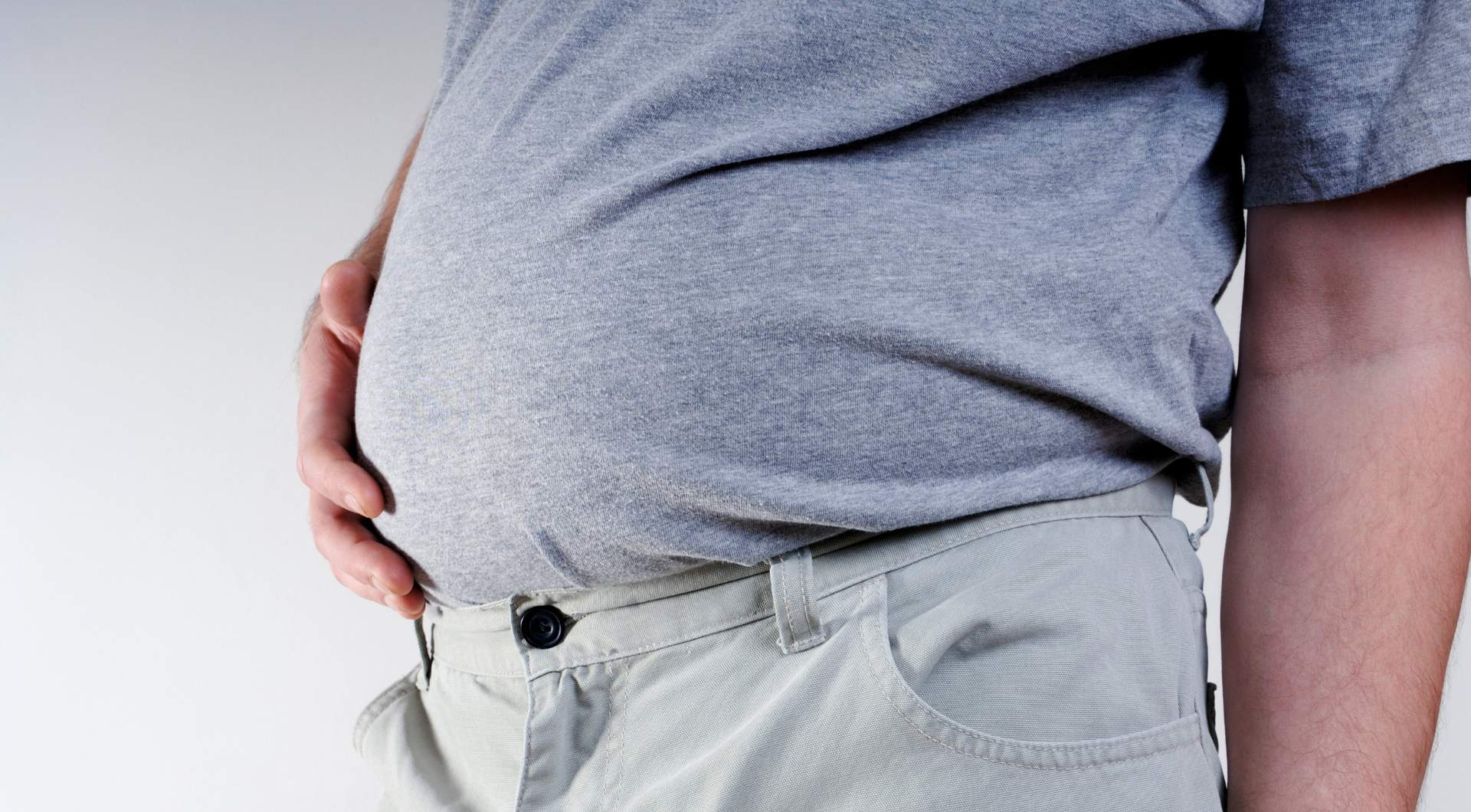Why Do Alcoholics Crave Sugar?
April 17, 2024
Unveiling the link between alcohol use disorders and sugar cravings. Discover the neurological and biological mechanisms behind it.
The Connection Between Alcohol Use Disorders and Sugar Cravings
Individuals with alcohol use disorders often experience strong cravings for sugar. This link between alcohol dependence and sugar cravings can be attributed to various factors, including the impact on blood sugar levels and a preference for sweet foods.

Impact on Blood Sugar Levels
Heavy drinking can have a significant impact on the body's blood sugar levels. Alcohol is rapidly converted into glucose in the bloodstream, causing a sudden spike in blood sugar levels. However, this increase is followed by a rapid drop in blood sugar levels as the body works to metabolize and eliminate alcohol.
The drop in blood sugar levels triggers a biological response in the body, leading to cravings for foods high in sugar. The body seeks to restore its blood sugar balance, and consuming sugary foods provides a quick source of energy. This explains why individuals with alcohol use disorders may often find themselves craving sugary treats.
Sweet Preference and Alcohol Dependence
Research has shown a connection between sweet preference and alcohol dependence. Studies have found that individuals with alcohol dependence and other drug dependencies often exhibit a preference for foods with a high sucrose concentration. This suggests that there might be shared mechanisms in the brain that contribute to both alcohol and sugar addiction.
Consuming sugar-rich foods or drinks can stimulate the release of endorphins and dopamine in the brain's reward center, similar to the effects of some drugs of abuse. This indicates a neurological connection between sugar addiction and drug addiction, including alcohol dependence. The pleasurable effects of consuming sugar can lead to a reinforcing cycle, where the individual seeks out more sugar to experience the same level of satisfaction.
Additionally, common behavioral patterns such as craving, tolerance, withdrawal, and sensitization have been observed in both sugar addiction and drug addiction, further supporting the link between sweet preference and alcohol dependence [2]. These shared patterns suggest that there may be underlying biological and psychological factors that contribute to both types of cravings.
Understanding the connection between alcohol use disorders and sugar cravings is important for individuals seeking recovery. By recognizing the biological and behavioral mechanisms at play, strategies can be developed to manage sugar cravings and promote healthier choices during the recovery process.
Neurological Link Between Sugar and Alcohol Addiction
Understanding the neurological link between sugar and alcohol addiction can shed light on why individuals with alcohol use disorders often crave sugar. This section explores the release of endorphins and dopamine and the behavioral patterns and commonalities observed in both sugar and alcohol addiction.
Release of Endorphins and Dopamine
Consuming sugar-rich foods or drinks can stimulate the release of endorphins and dopamine within the nucleus accumbens, similar to the effects of some drugs of abuse. The nucleus accumbens is a region of the brain associated with reward and pleasure. The release of these chemicals creates feelings of happiness and reward, reinforcing the desire for more sugar.
Interestingly, individuals with alcohol addiction release significantly fewer endorphins compared to a control group [3]. Endorphins are chemical messengers that trigger feelings of happiness and reward. The reduced endorphin release observed in individuals with alcohol addiction persists even after long periods of abstinence from alcohol. This blunted reward response may contribute to the craving for substances that can provide pleasure, such as sugar.
Behavioral Patterns and Commonalities
Behavioral patterns observed in both sugar addiction and drug addiction indicate a connection between the two. Craving, tolerance, withdrawal, and sensitization have been observed in both human and animal studies related to sugar and drug addiction. These commonalities suggest that there may be shared mechanisms underlying the development and maintenance of addictive behaviors.
Addiction is often described as a "reward deficient" state, where individuals have difficulty deriving happiness from rewarding activities and may compensate with substance use. This reward deficiency can contribute to the seeking of alternative rewards, such as sugar, to compensate for the reduced pleasure experienced in other areas of life.
Research has shown that intermittent, excessive sugar intake can lead to behaviors similar to drug addiction, including bingeing, withdrawal, craving, and cross-sensitization. Neurochemical changes, such as alterations in dopamine and opioid receptor binding and mRNA expression, as well as changes in acetylcholine release in the nucleus accumbens, have been observed in relation to sugar addiction. In fact, sugar can stimulate the pleasure center in the brain as much as drugs like cocaine, and sometimes even more than alcohol and drugs [4].
Understanding the neurological link between sugar and alcohol addiction provides insights into the complex relationship between these two substances. Further research is needed to fully elucidate the underlying mechanisms and their implications for addiction treatment and recovery.
Genetic and Familial Factors
The relationship between alcohol use disorders and sugar cravings is influenced by various genetic and familial factors. Understanding the role of genes and familial links can provide insights into why individuals with alcohol use disorders often experience strong cravings for sugar.
Influence of Genes on Sweet Preference
Certain genes may contribute to an individual's preference for sweets, especially in those with alcohol and drug dependence. Research suggests that specific genes may play a role in determining sweet preference in individuals with alcohol and drug dependence, as well as in the biological children of alcoholic parents. This genetic predisposition may explain why individuals with alcohol use disorders often have a heightened craving for sugar.
Additionally, gene variants related to the dopamine system, specifically D2, D1, and D4 receptors, have been associated with alcohol dependence. The dopamine system plays a crucial role in reward and pleasure pathways in the brain. Variations in these genes may contribute to the development of alcohol dependence and the associated craving for both alcohol and sugar.
Familial Links Between Alcohol Dependence and Sweet Cravings
The familial connection between alcohol dependence and sweet cravings further supports the notion that genetic and environmental factors influence the relationship between alcohol use disorders and sugar cravings. Biological children of alcoholic parents, particularly alcoholic fathers, are more likely to exhibit a strong preference for sweets. This familial link suggests that the genetic predisposition to alcohol dependence may also contribute to a heightened craving for sugar.
It is worth noting that the preference for sweets in individuals with alcohol use disorders can lead to eating disorders in some cases. This highlights the complex interplay between genetic factors, alcohol dependence, and sweet cravings, and the potential impact on overall health and well-being.
Understanding the genetic and familial factors associated with sweet preferences and alcohol dependence can provide valuable insights into the bittersweet reality of the link between alcohol use disorders and sugar cravings. By recognizing these influences, individuals and healthcare professionals can develop strategies to manage cravings and promote healthier habits in recovery.
Biological Mechanisms Behind Sugar Cravings
Understanding the biological mechanisms behind sugar cravings in individuals with alcohol use disorders (AUD) is essential for comprehending the link between these two phenomena. Two key factors at play are brain function and the role of the dopamine system.
Brain Function and Reward System
The reward system in the brain plays a significant role in the development of cravings and addictive behaviors. Alcohol consumption can induce the release of dopamine (DA) in the nucleus accumbens (NAc) and other areas of the brain, creating pleasurable sensations. Similarly, the consumption of sugar can stimulate the pleasure center in the brain, leading to feelings of reward and satisfaction.
Research suggests that excessive sugar intake can lead to behaviors resembling drug addiction, such as bingeing, withdrawal, and craving. These behaviors are accompanied by changes in neurochemicals, including alterations in dopamine and opioid receptor binding and mRNA expression. This suggests that the brain's reward system, which is involved in alcohol dependence, can also contribute to sugar cravings.
Role of Dopamine System
The dopamine system is intricately involved in the complex etiological network of alcohol dependence. Ethanol, the primary component of alcoholic beverages, can increase dopamine levels in the central nervous system (CNS) by promoting synaptic terminal dopamine release and affecting GABAergic neurons and opioid receptors in the nucleus accumbens (NAc). These dopamine-related effects contribute to the rewarding and reinforcing properties of alcohol.
Gene variants related to the dopamine system, particularly D2, D1, and D4 receptors, have been associated with alcohol dependence. However, the specific pathways through which these gene variants contribute to alcohol dependence are still a subject of ongoing research and debate [5].
Numerous studies have indicated a strong connection between AUD and sugar cravings. Dysregulation of the dopamine and reward system, as well as imbalances in neurotransmitters like serotonin, GABA, and glutamate, contribute to sugar cravings in individuals with AUD [4]. The similarities in the biological mechanisms underlying both alcohol and sugar addiction provide insights into why individuals with AUD may experience intense sugar cravings during recovery.
Understanding the biological mechanisms behind sugar cravings in individuals with AUD can help inform strategies for managing those cravings and promoting healthier choices. By addressing imbalances in neurotransmitters and focusing on the regulation of the dopamine system, individuals in recovery can work towards a balanced and sustainable lifestyle.
Managing Sugar Cravings in Recovery
For individuals in recovery from alcohol use disorders, managing sugar cravings can be a crucial aspect of maintaining sobriety and overall health. Sugar cravings often arise as a coping mechanism to manage stress, regulate emotions, or fill the void left by alcohol. However, excessive consumption of sugar can lead to health problems and potentially trigger a relapse. Here are two strategies for effectively managing sugar cravings in recovery:
Coping Mechanisms and Stress Management
Recovering alcoholics may turn to sugar as a way to cope with stress and uncomfortable emotions. Developing healthy coping mechanisms and stress management techniques can help individuals in recovery navigate these triggers and reduce their reliance on sugar. Some effective strategies include:
- Engaging in regular physical activity: Exercise can serve as a healthy outlet for stress and help regulate emotions. Whether it's going for a walk, practicing yoga, or participating in a favorite sport, physical activity can provide a natural mood boost and help reduce sugar cravings.
- Seeking support: Connecting with supportive friends, family members, or participating in support groups can provide a valuable network of individuals who understand the challenges of recovery. Talking about cravings and emotions with others who have similar experiences can help alleviate stress and reduce the desire for sugar as a coping mechanism.
- Practicing mindfulness and relaxation techniques: Techniques such as deep breathing exercises, meditation, and mindfulness can help individuals become more aware of their cravings and manage them effectively. These practices can help reduce stress levels and promote a sense of calm.
Addressing Nutrient Deficiencies
Alcohol use disorder can have a significant impact on the body's nutrient levels, leading to various deficiencies. To compensate for these deficiencies, the body may send signals for increased sugar intake as a way to obtain quick energy. Addressing nutrient deficiencies can play a crucial role in managing sugar cravings. Some key considerations include:
- Balanced diet: Adopting a well-balanced diet that includes a variety of nutrient-dense foods can help replenish essential vitamins and minerals. Incorporate whole grains, lean proteins, fruits, vegetables, and healthy fats into your meals to ensure optimal nutrient intake.
- Regular meals and snacks: Maintaining regular eating patterns by having balanced meals and snacks throughout the day can help stabilize blood sugar levels and prevent drastic fluctuations that may trigger sugar cravings.
- Nutritional supplements: Consult with a healthcare professional to determine if any specific nutrient deficiencies need to be addressed through supplementation. This can help support overall health and reduce cravings.
By implementing coping mechanisms for stress management and addressing nutrient deficiencies, individuals in recovery can effectively manage sugar cravings. It's important to remember that seeking support from healthcare professionals and incorporating these strategies into a comprehensive recovery plan can greatly enhance long-term success in managing sugar cravings and maintaining sobriety.
Implications for Recovery and Health
Understanding the implications of sugar cravings in individuals with alcohol use disorders is crucial for their recovery and overall health. The link between alcohol use disorders and sugar cravings can have a significant impact on nutrient levels, mental well-being, and long-term recovery. Let's explore two key aspects: balancing nutrient levels and long-term strategies for sugar craving management.
Balancing Nutrient Levels
Alcohol use disorder can have a detrimental effect on the body's nutrient levels. During alcohol abuse, essential nutrients are often depleted, leading to various nutrient deficiencies. To compensate for these deficiencies, the body may send signals for increased sugar intake as a way to obtain quick energy, perpetuating the cycle of craving and consuming sugary foods or beverages. Balancing nutrient levels is crucial for overall health and recovery.
Individuals in recovery should focus on incorporating nutrient-dense foods into their diet. This includes consuming a variety of fruits, vegetables, whole grains, lean proteins, and healthy fats. These foods provide essential vitamins, minerals, and antioxidants that support the body's healing process and help regulate blood sugar levels.
Working with a healthcare professional or registered dietitian can provide personalized guidance for achieving optimal nutrient levels. They can assess individual nutrient deficiencies and recommend appropriate dietary adjustments or supplements to support recovery and overall well-being.
Long-Term Strategies for Sugar Craving Management
Managing sugar cravings in the long term is crucial for individuals in recovery. Sugar cravings can serve as a coping mechanism for managing stress, regulating emotions, or filling the void left by alcohol. While sugar may provide temporary comfort and pleasure, excessive consumption can lead to health problems and potentially trigger a relapse.
Implementing effective strategies to manage sugar cravings can support recovery efforts. Here are some helpful tips:
- Mindful Eating: Practicing mindful eating can help individuals become more aware of their hunger and fullness cues. Taking the time to savor and enjoy food can reduce the urge to consume sugary snacks impulsively.
- Stress Management: Finding healthy ways to manage stress and cope with emotions is crucial for long-term sugar craving management. Engaging in activities such as exercise, meditation, deep breathing, or pursuing hobbies can help individuals find alternative ways to alleviate stress and emotional discomfort.
- Support Network: Building a strong support network is essential for individuals in recovery. Surrounding themselves with understanding and supportive individuals can provide encouragement and accountability during challenging times, including when dealing with sugar cravings.
- Replacing Sugary Options: Gradually replacing sugary snacks and beverages with healthier alternatives can help reduce sugar cravings. Choosing fruits, vegetables, and whole foods can satisfy the craving while providing essential nutrients.
By implementing these strategies, individuals in recovery can better manage their sugar cravings and support their long-term health and well-being. It is important to remember that everyone's journey is unique, and seeking personalized guidance from healthcare professionals or addiction specialists can provide valuable support throughout the recovery process.
References
Learn About Clear Steps Recovery and How We Can Help You
Once you reach out to Clear Steps Recovery, your path becomes clear, and you can get the help and support you need to break the cycle of addiction. Our serene woodland environment promotes physical, mental, emotional, and spiritual healing.
Call today or contact us online to get started.
The Path Is Clear – Take Your First Steps Today with Clear Steps Recovery
With our team and your desire to heal, we can improve your quality of life and functional abilities, so you can get back to living your best life.
































.jpg)


















.jpg)
.jpg)















































